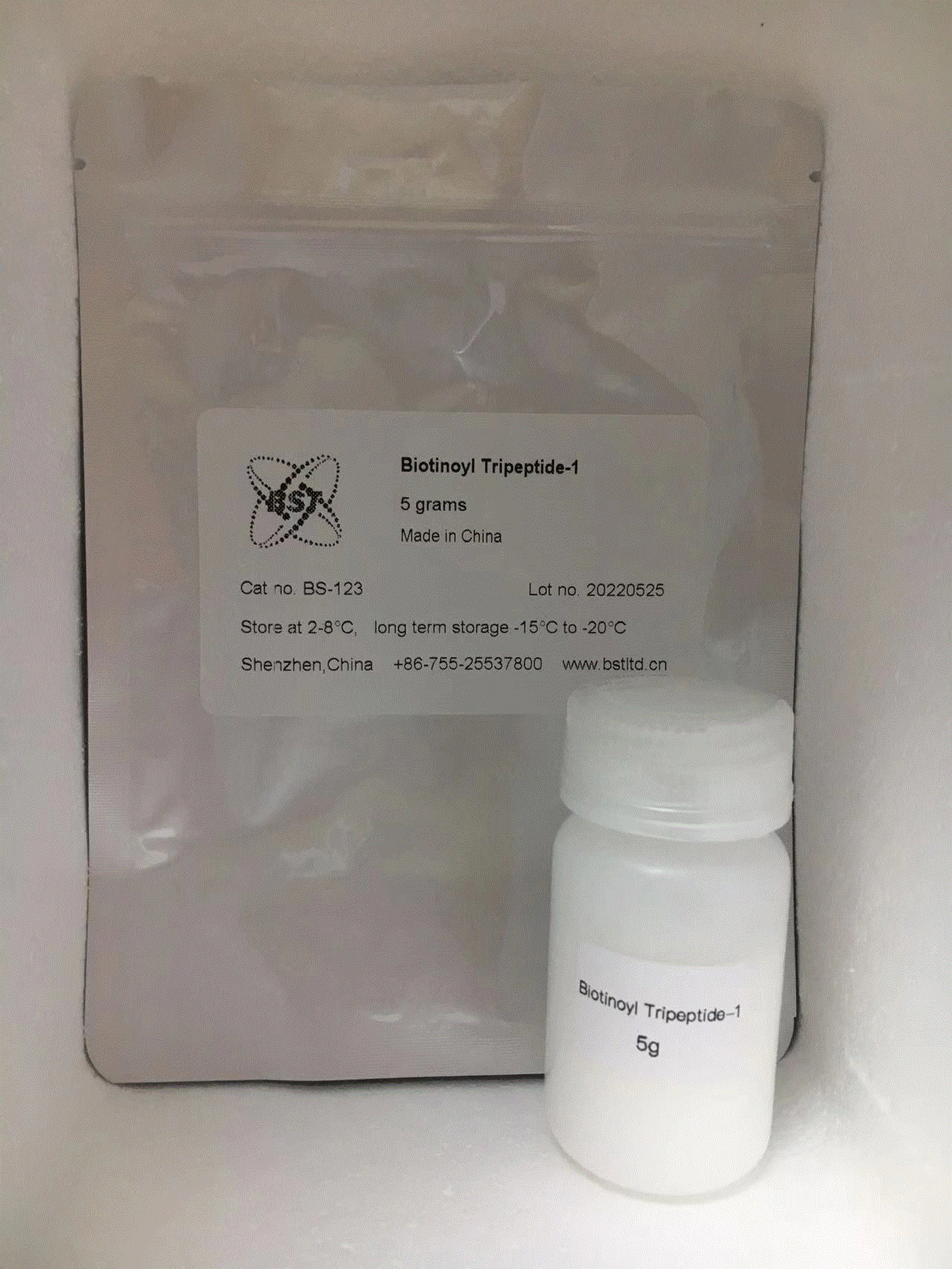Biotinoyl Tripeptide-1 299157-54-3 stimulates hair growth treatment of hair loss

Ürün tanımı
Shenzhen BST Science & Technology Co., Ltd export Biotinoyl Tripeptide-1 299157-54-3, Biotinoyl Tripeptide-1 299157-54-3 is used for treatment of hair loss.
Biotinoyl Tripeptide-1 299157-54-3
INCI Name: Biotinoyl Tripeptide-1
CAS: 299157-54-3
Other names: Biotin-GHK-OH , Biotin-GHK
Sequence: Biotin-Gly-His-Lys-OH
Molecular Formula: C24H38N8O6S
Molecular Weight: 566.67
Appearance White or almost white powder
Purity >95%
Solubility soluble in water
Storage Temperature 2 ~ 8°C
Function:
Stimulates hair growth
Hair conditioning
Treatment of hair loss
Stimulates natural eyelash growth
Application:
Hair care products including s hampoos, c onditioners and s tyling to increase hair growth, make hair strong
Can be used in mascara, e yelash regulating fluid, e yelash products such as e yelash care solution, to help eyelashes to appear longer, fuller and stronger .
Biotinoyl Tripeptide-1 is a tripeptide comprising of b iotin and 3 amino acid residues. It can stimulate the synthesis of collagen IV and laminin 5, the hair is fixed in the dermal follicles to prevent hair loss. It can promote hair growth, inhibit hair loss, strengthen hair. At the same time it can stimulate the hair follicles to produce healthy hair, help the scalp blood circulation and activate hair follicles.
Biotinoyl Tripeptide-1 have positive effects on hair follicles by promoting scalp micro-circulation and reducing follicle atrophy caused by follicle aging.
Biotinoyl Tripeptide-1 stimulates hair cell metabolism. It contains b iotin which helps healthy and strong regrowth of hair. Increases dermal scalp levels of collagen and elastin, which reduces the damage of DHT to the follicles. Biotinoyl Tripeptide-1 protects and repairs hair follicles.
Biotinoyl Tripeptide-1 stimulates collagen synthesis which anchor hair for anti hair and eyelash loss.
Biotinoyl Tripeptide-1 is also a matrikine displaying powerful tissue repair activity.
Biotinoyl Tripeptide-1 binds effectively to the collagen matrix and red blood cell (RBC) membrane.

